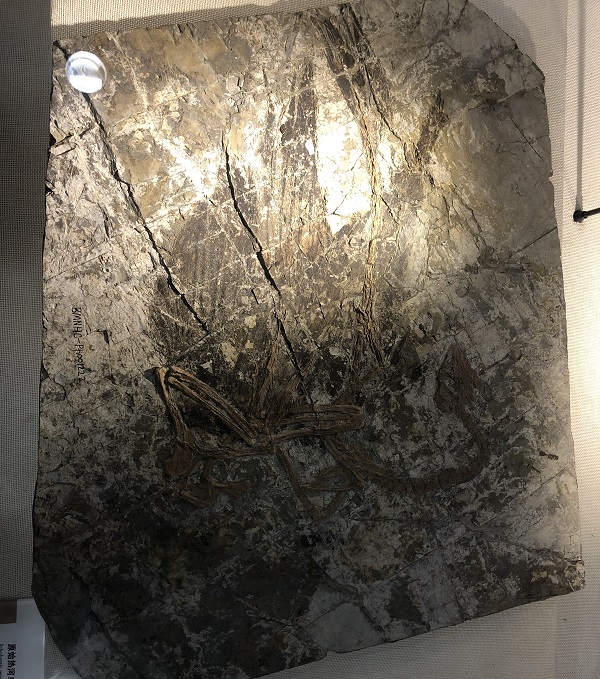BH Staff | May 19, 2023
Age and Locality: Early Cretaceous, Liaoning Province.

Jeholornis prima, also known as the “primitive Jehol bird,” is a significant species in the study of avian evolution, dating back to the Early Cretaceous period, approximately 120 million years ago. Discovered in the Jehol Biota of northeastern China, a region famous for its exceptionally well-preserved fossils, Jeholornis prima offers crucial insights into the transition from non-avian dinosaurs to modern birds.
One of the most fascinating aspects of Jeholornis prima is its mix of primitive and advanced characteristics, making it a key transitional fossil. Unlike modern birds, Jeholornis retained some dinosaurian features, such as a long bony tail consisting of over 20 vertebrae. However, it also possessed unmistakably avian features, including a beak with teeth and well-developed flight feathers on its wings and tail. This combination of traits provides evidence of the evolutionary steps leading from theropod dinosaurs to birds.
The size and structure of Jeholornis suggest it was capable of powered flight, though perhaps not with the same efficiency or maneuverability as later birds. Its long tail, while providing stability in flight, indicates that avian flight dynamics were still evolving. The presence of both primary feathers (on the wings) and long, symmetrical tail feathers suggests that Jeholornis could have used its tail to aid in steering and balance while flying or gliding.
Jeholornis prima’s diet and ecological role have been subjects of study, with some evidence suggesting it was herbivorous or omnivorous, based on the presence of seeds found in association with its fossils. This dietary evidence contributes to our understanding of early bird ecology and how these ancient avians fit into their ecosystems.
The discovery and study of Jeholornis prima have significantly advanced our understanding of avian evolution. By providing a clear example of a transitional form between non-avian dinosaurs and birds, Jeholornis bridges the gap in the fossil record and supports the theory that birds are the direct descendants of theropod dinosaurs. Its combination of dinosaurian and avian features illustrates the gradual evolution of flight and other avian characteristics, highlighting the complexity of evolutionary processes.
